Having arrived in Washington to begin my degree in the Fall of 2016, I was well placed when the results of the 2016 Presidential Election saw a wave of protests in the District and around the country. Inauguration Day saw protests, the Women's March the following day saw some of the largest crowds in American History... many more followed including the March for Science, the Climate March, The DAPL Pipeline protest, and the Day Without A Woman.
So I thought I would share what I've learned shooting protests, marches, and similar events. This won't include your legal rights as a photographer. I'm not a lawyer and I have no extended expertise on the subject. If you want info on that, PhotographyLife.com has a good article here.
First, know your equipment. Often these events are very crowded and action can happen very quickly. You don't want to be caught trying to adjust your settings and missing the action as it unfolds. I'm not going to insist on shooting manual and say that's the only way to do it. Not all pros do, no matter what you may be been told. I've shot manual and aperture priority with Auto-ISO (with appropriate minimum shutter speed already locked in), a trick I learned from street photographer Steve Simon. You may want to shoot manual and then switch to aperture priority if moving through constantly changing lighting (like between buildings on a sunny day for instance). If you don't trust yourself to make the changes quickly or you're not quite to the point were you can look at a scene and know exactly what settings to use, set your camera on aperture priority.
Next, keep your head up. This is an important reason to know your equipment well. While most protests are peaceful and relatively safe that doesn't mean you can let your guard down. It's like being at a baseball game; mostly safe but you must keep an eye out for a foul ball. Even in a peaceful protest people are holding signs and may not be able to see where they are going, or they simply aren't paying attention. Its very easy to be hit with a sign or bumped into.
Vigil for Charlottesville
In a related matter. Try to get a sense of the layout of the city or neighborhood the protest will be taking place in. Police may block off streets between you and the action or you may just want to take a parallel street to get ahead of the marchers. If you're new to the city it's not a bad idea to study a map the night before. Some apps will allow you to download the local street map. Do this if you are unfamiliar with the layout. If a lot of people are attending the march they'll likely be posting photos and video to social media and eating up the bandwidth. Don't count on it being there.
As for danger involved in protests that become less than peaceful... stay conscious of the mood of the crowd. You'll often feel the tension in the crowd before it boils over. Anticipate what may happen next so that you may position yourself in the best possible place to photograph the action. Now's a good time to get photos of individuals in the crowd, the the police, or other onlookers.
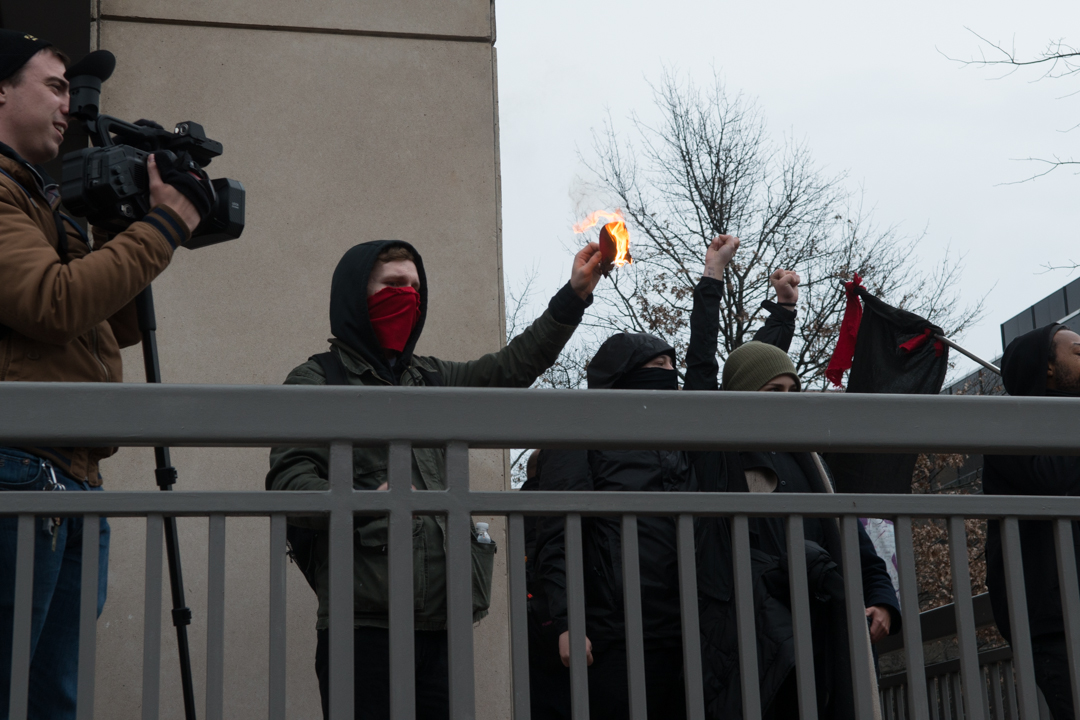
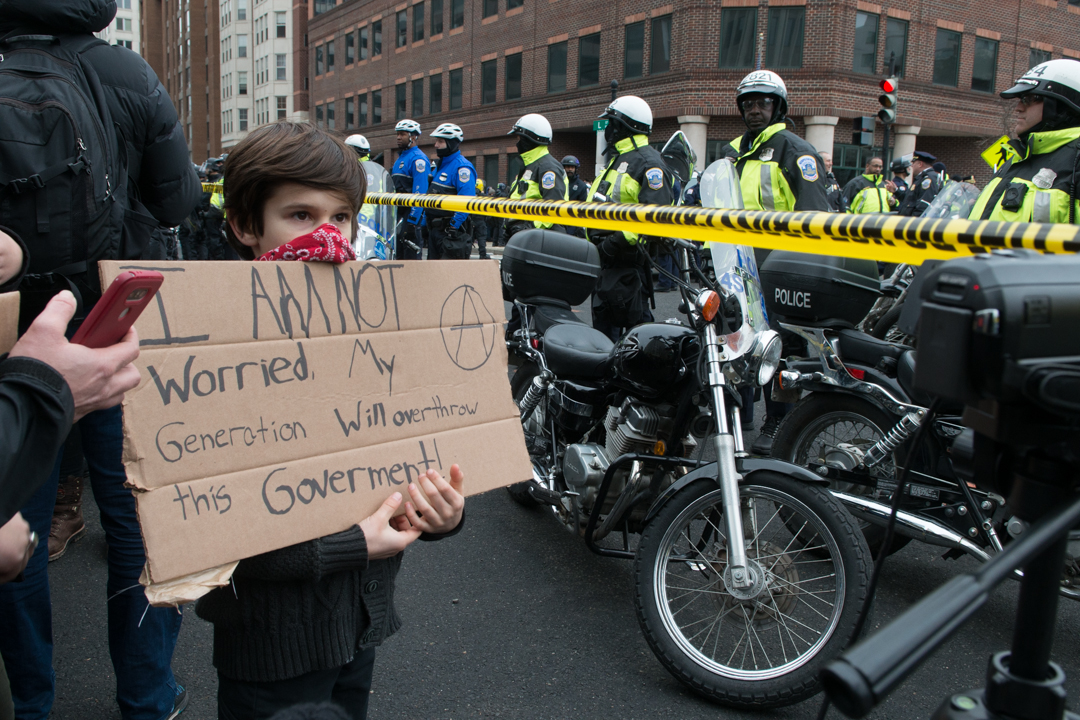
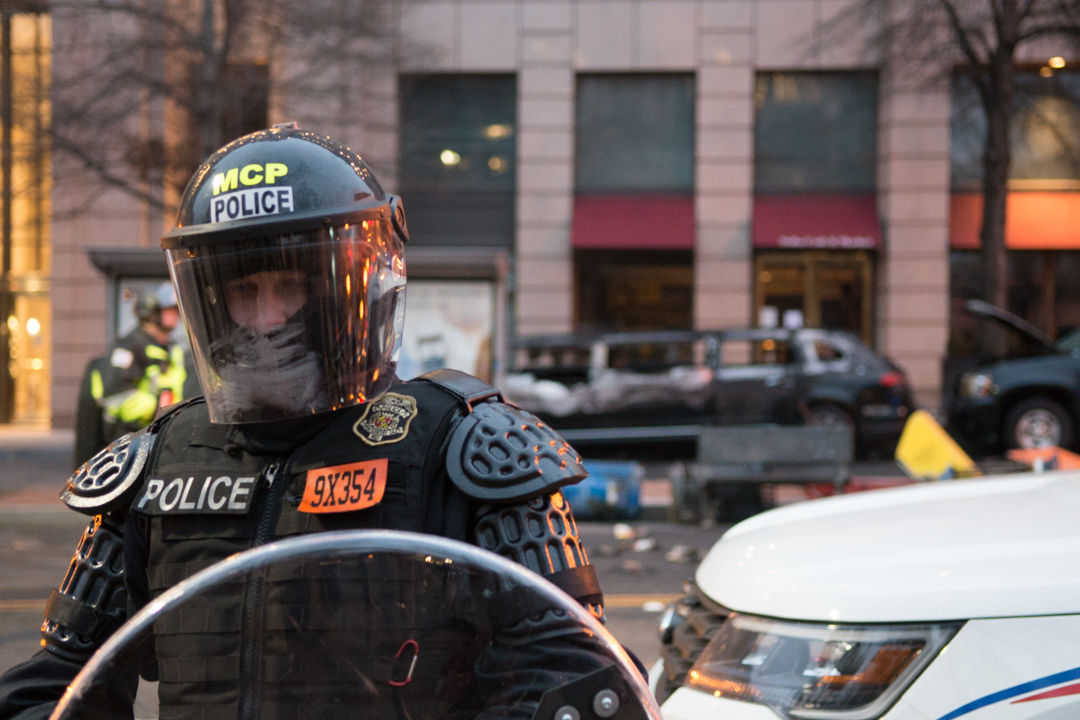
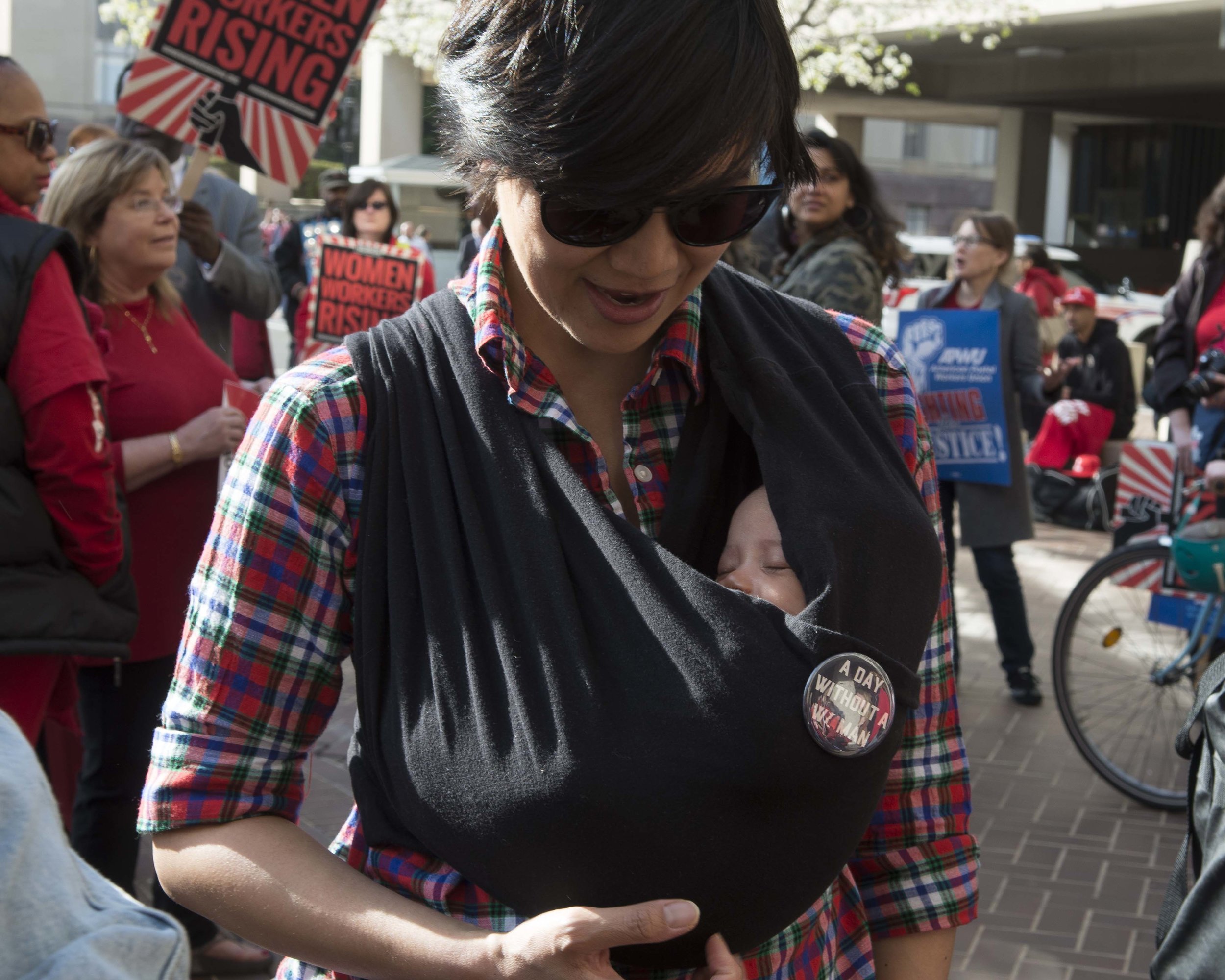
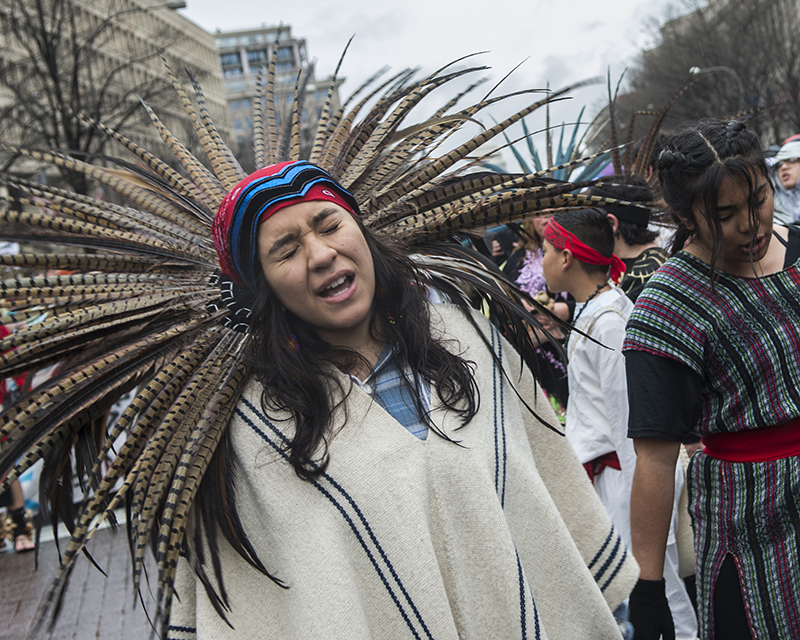
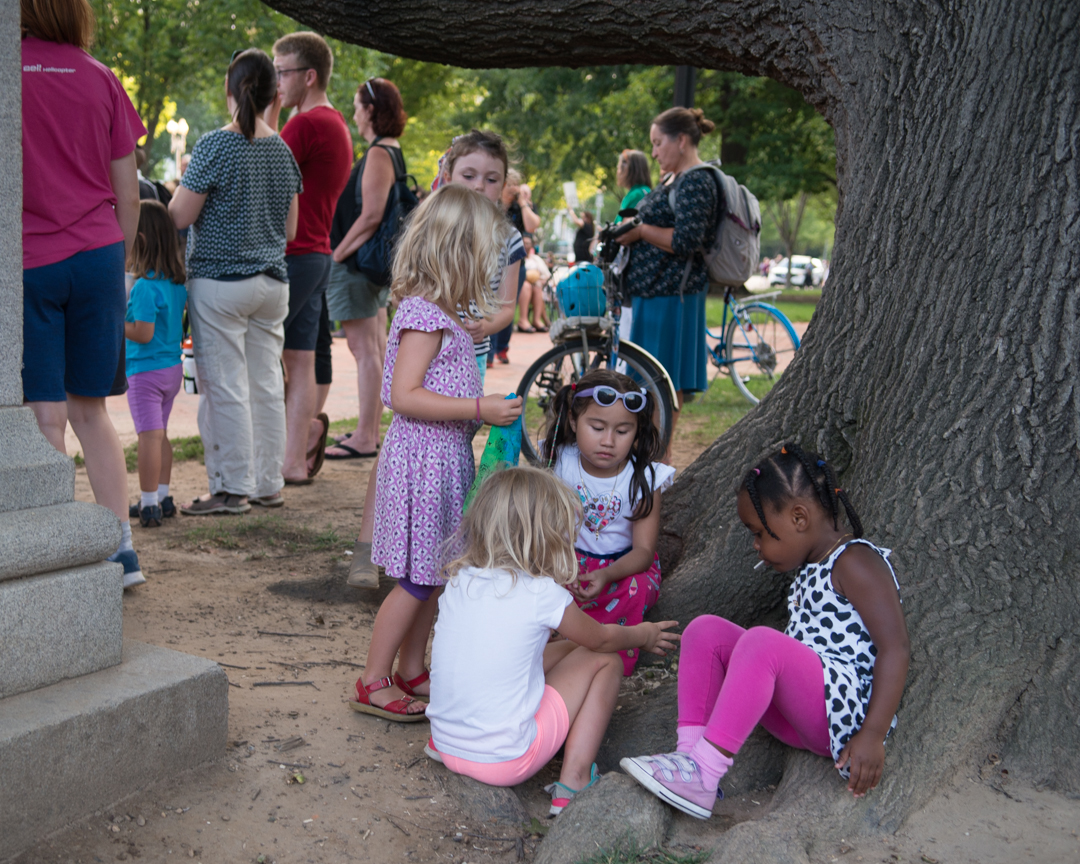
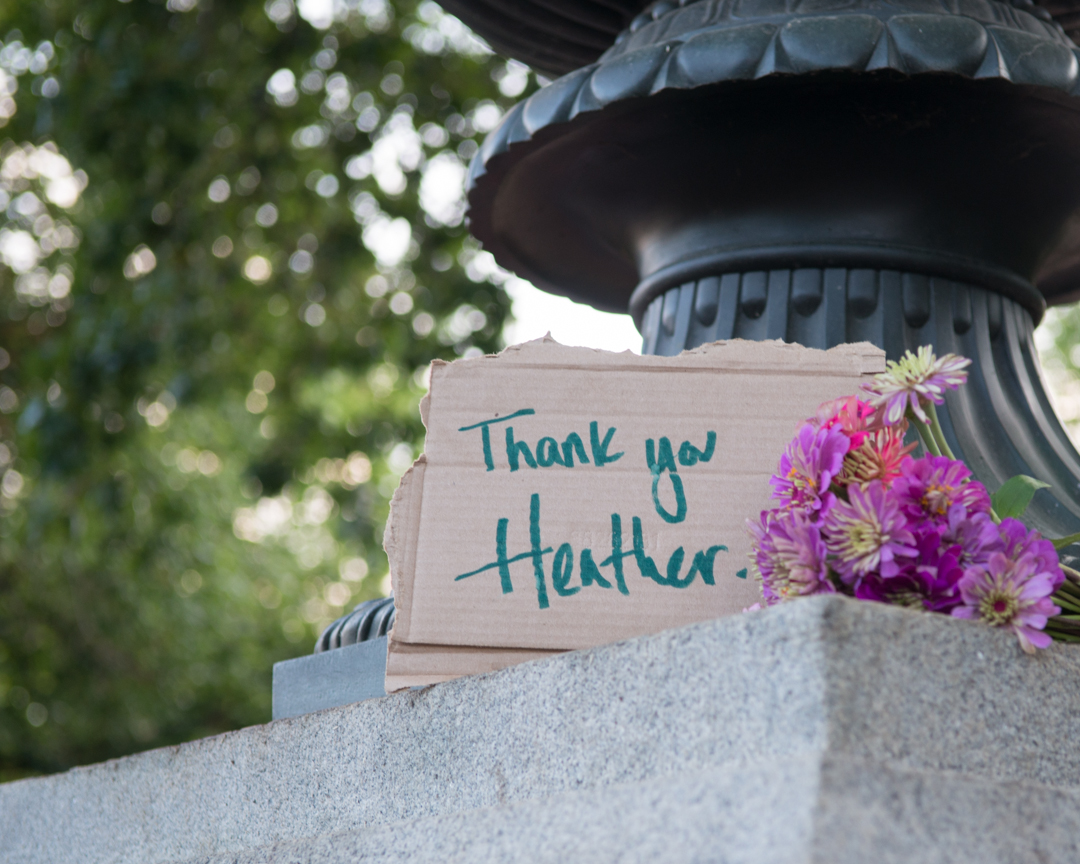
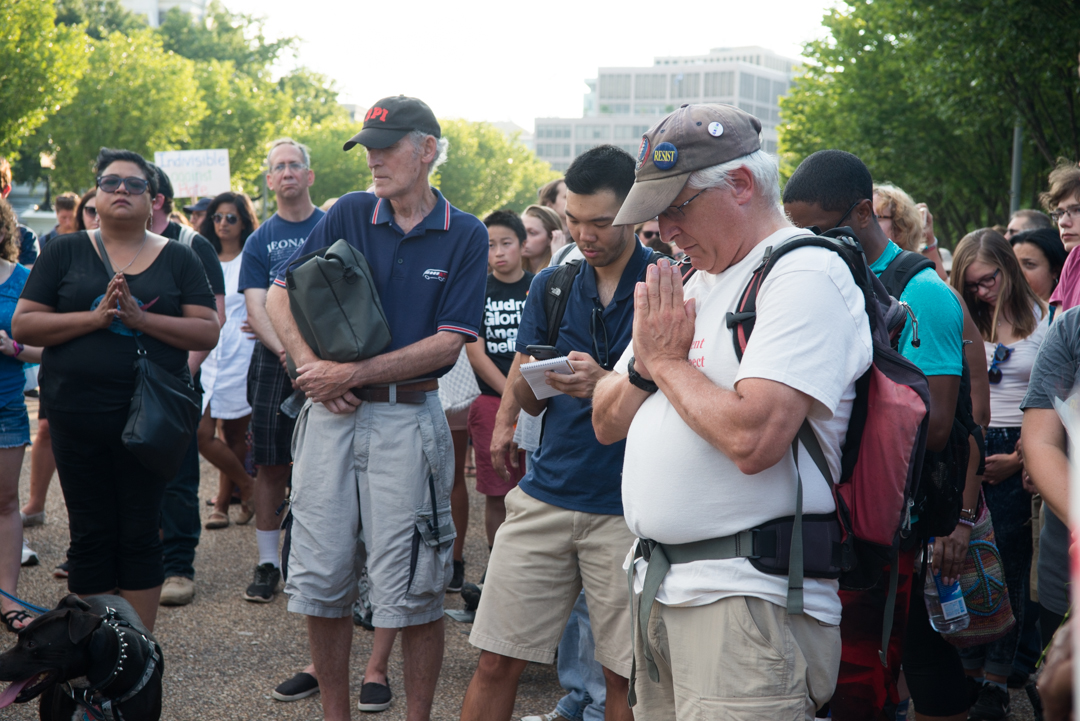
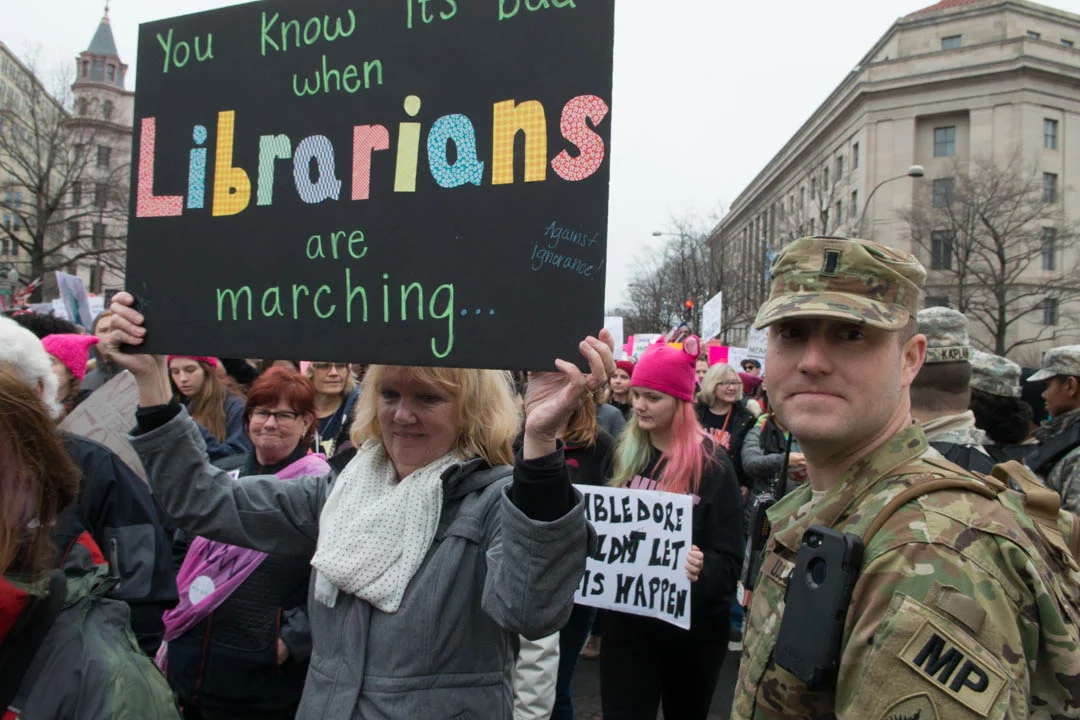
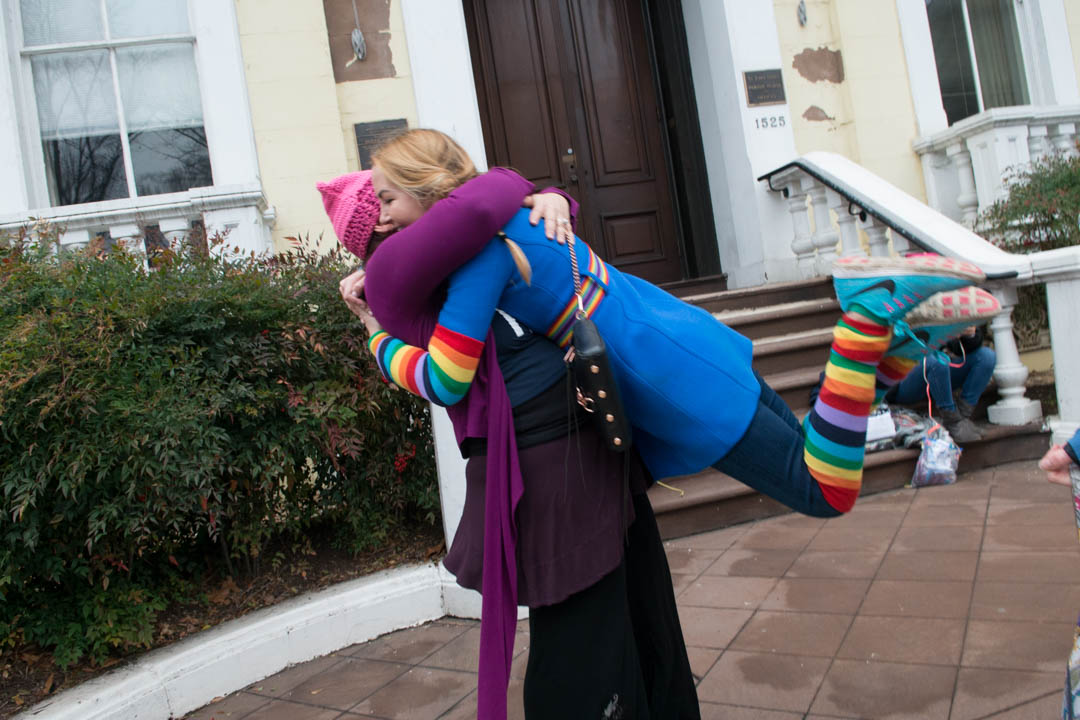
If you feel like you are in danger, remember, no photo is worth your health or life. Don't feign away from the action, but keep in mind that some photographers unconsciously fall into a space in which they see their camera as a shield between them and danger. You get in a headspace of capturing the scene and forget that... you are there. Don't forget it's happening around you and you are not invincible.
Inauguration Day 2017
I'm not saying don't take risks, just be conscious of those risks and never loose track of your surroundings.
Inauguration Day 2017
As for non-camera essentials, nothing is more important than a good pair of shoes. I recommend a solid pair of work boots; something with ankle support. You could find yourself walking for several hours and if you want to be able to stand by the end of the day you'll want shoes that can withstand being stepped on and climbing steps, curbs, maybe trees to get a good vantage point.
Also get yourself a solid camera strap. If you are using a standard neck strap make sure when wearing it on your shoulder that the camera lens is pointed toward your body. It'll protect your lens from being whacked by passersby and put the camera in position to easily be grabbed with one hand.
c/o http://oneslidephotography.com/how-to-safely-carry-your-camera/
I use a strap by blackrapid that allows me to comfortably carry two cameras. Find something that's comfortable for you. The most important thing is that its comfortable enough that you'll get your camera out of your bag. Have it ready at all times. I was waiting on food at Bolt Burgers when pepper spray and concussion grenades started going off outside on Inauguration Day. I still remember running outside with my order buzzer in my pocket. Having my camera ready allowed me to get the two shots above.
Finally, if you are photographing an event remember that your priority is to get the shot. Especially if you are a photojournalist. It can be tempting to join the rally or protest, but you are there to do a job. Joining in removes your ability to be objective. We all have our biases and its our job to do our best to put them to the side.
Don't forget to have fun. You may be witnessing history. Soak it in.




